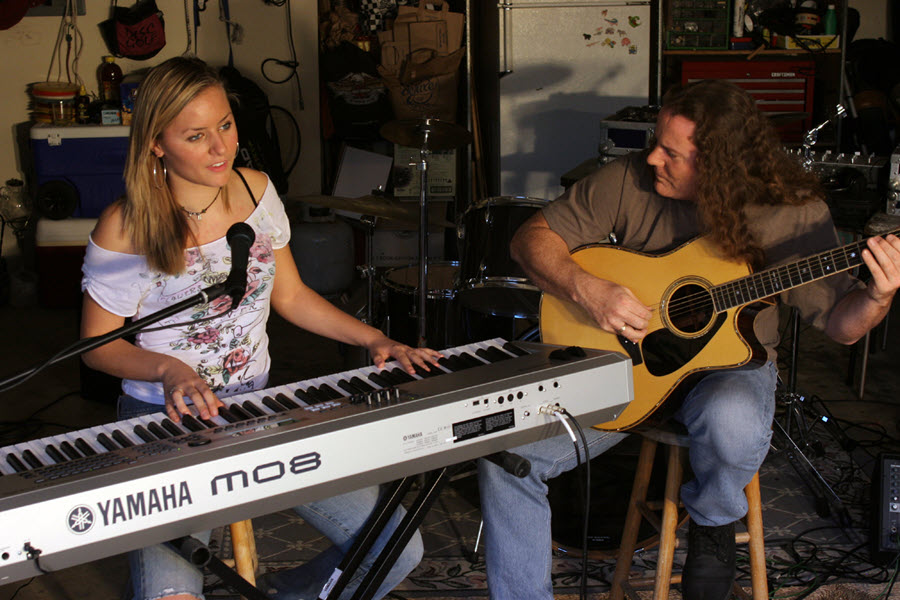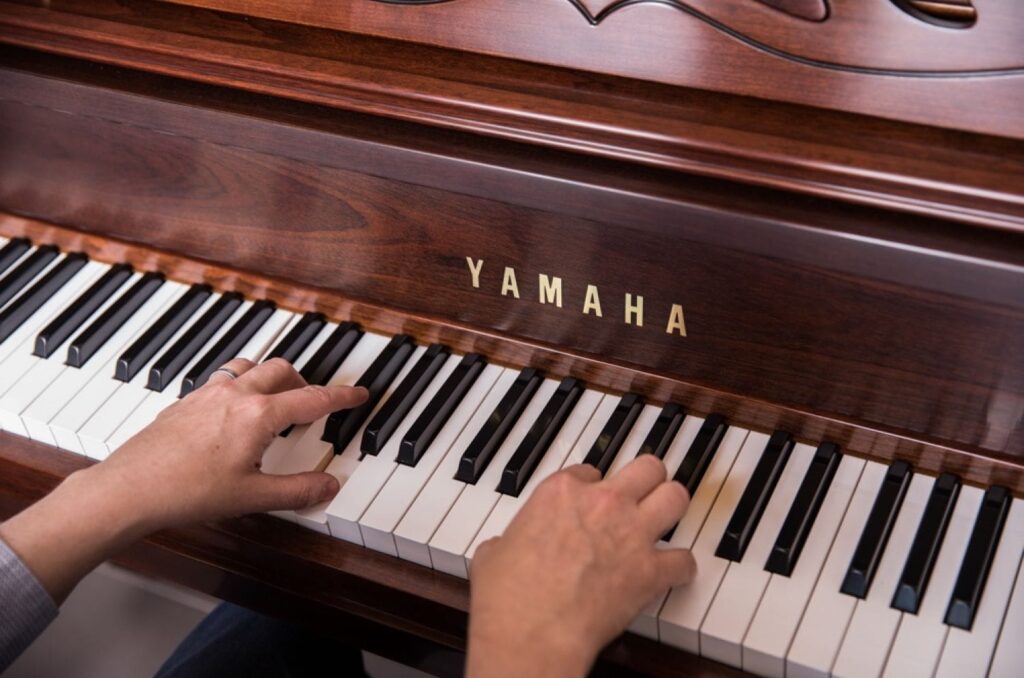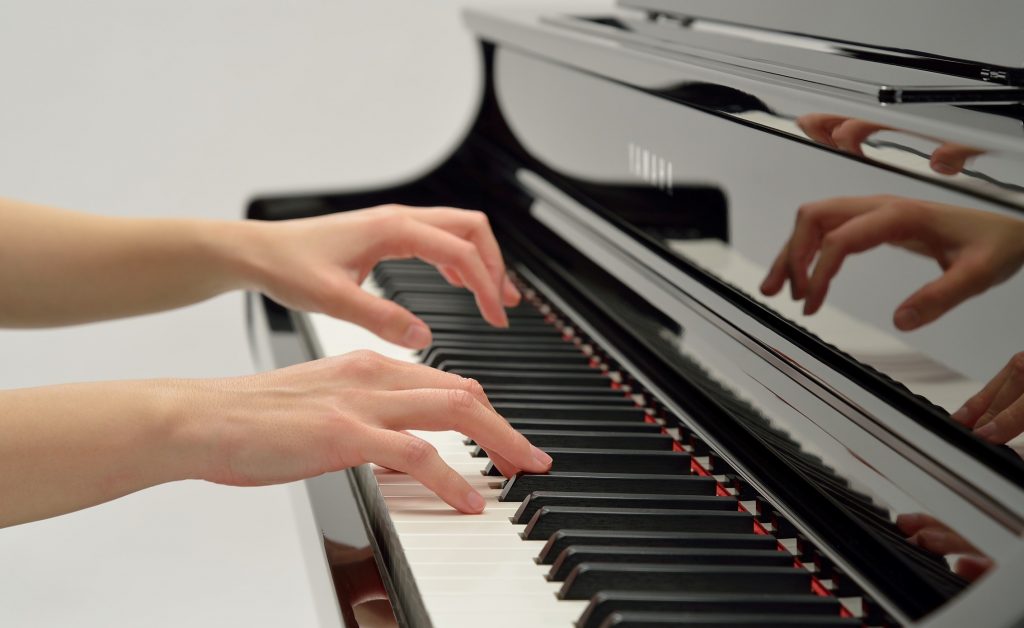Tagged Under:
How to Use Keyboard Pedals
Learn how to incorporate pedals into your performance.
Playing keyboards involves more than just your hands and fingers. There are also one or more foot pedals involved, and while using them is not mandatory, employing them will enhance your performance. In this article, we’ll show you how.
The Sustain Pedal
No matter what kind of keyboard you’re using — acoustic grand piano, acoustic upright piano, digital piano or even a simple digital keyboard — there will be a Sustain pedal. On acoustic pianos this is called the Damper pedal, because when you press it down, it lifts up all the dampers (small pieces of felt-backed wood that are used to stop the strings from vibrating, as shown in the photo below), but regardless of terminology, they all have the same function: to allow notes to sustain after you lift your fingers from the keys. This helps you to connect notes that are too far away for you to reach without moving your hand position.
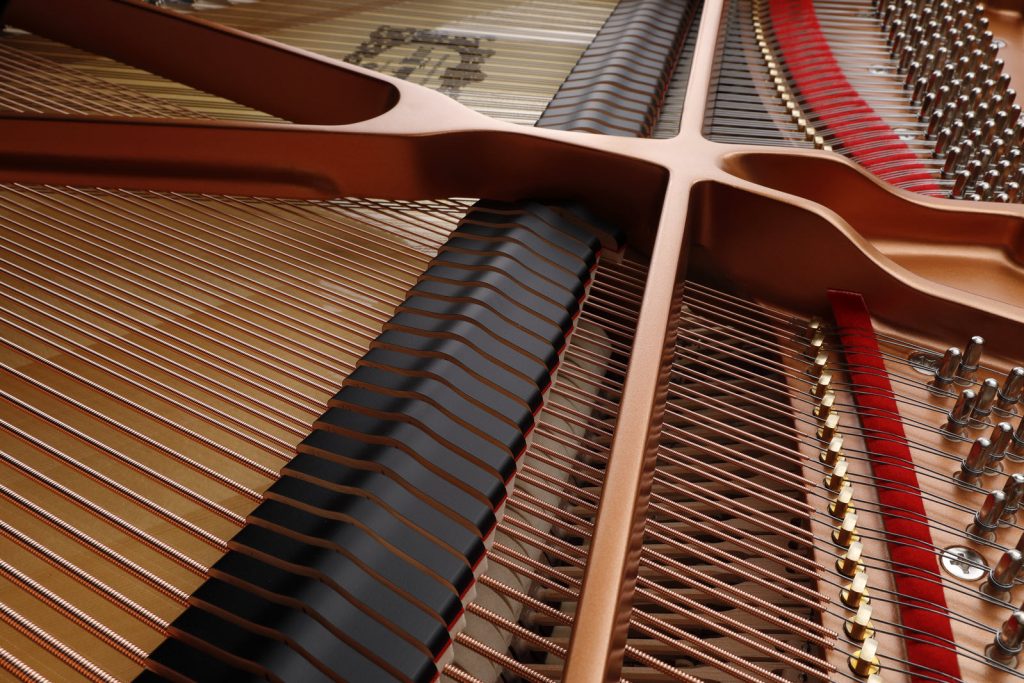
On acoustic pianos and digital pianos with a case design that looks like an acoustic, this will be the pedal on the right. Smaller, slab-style digital pianos and digital keyboards will come with a separate pedal that gets plugged into a jack in the back, usually labeled Sustain:

The basic technique for using the sustain pedal is as follows:
1. Make sure that your right foot heel is on the ground, and that the front of your foot is resting lightly on the pedal.

2. Play a note, and then immediately depress the pedal fully. When you lift your finger off the key, the note will keep ringing. If you lift your toes up from the pedal, the note will stop ringing.
To demonstrate how to use the Sustain pedal to connect notes together instead of using your fingers, we’ll use a C Major scale. Start by playing Middle C with your second finger, then press down the sustain pedal. When you’re ready, play the D note (again, with your second finger), and lift the pedal up as you press down on the key. If you lift it up too early, the notes won’t be connected. If you’re a little late, the C note will ring into the D slightly. Right after you play the D, press the pedal down again. Repeat this process each time you play the next scale tone: Using your second finger only, play a new note while simultaneously lifting the pedal, and then depress the pedal again.
Here’s the exercise represented in musical notation, along with an audio clip so you can hear what it sounds like. Note the line below the music staff, which shows the intended pedal actions (the solid line indicates when the pedal should be held down; the up arrows indicate when it should be lifted up):

This technique is commonly referred to as legato pedaling (legato is a musical term that means “to play connected”). Now let’s apply this kind of pedaling to some basic musical examples. The notation below shows a common way to play a chord with the left-hand only by first striking the root down low, and then bringing the hand up to play the triad. Using legato pedaling, you can connect the low note to the chord cleanly, with no overlap, as you can hear in this audio clip.

Extending the concept, here’s a good exercise for the left hand that trains you to move across longer distances, again using the Sustain pedal to connect the notes.
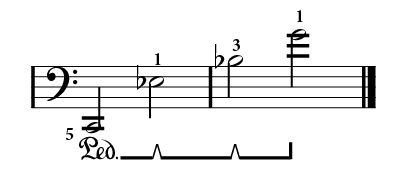
Next is an exercise for the right hand. The first two notes fit under the hand nicely, so no pedaling is required; however, to jump up to the higher E you’ll need to do a legato pedal move. The following G also fits well under the hand, so no pedaling is needed, but then you’ll need to shift your hand position, so you’ll want to use the pedal to connect that smoothly.

Other Ways to Use the Sustain/Damper Pedal
Connecting notes is only one way to use the Sustain pedal; it’s also often employed to create a warm swirl of sound with notes all overlapping together. Go back to the first left-hand example we presented, but this time keep the pedal down so the chord gets added on top of the low C note, like this:
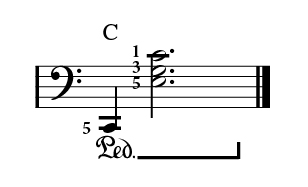
As you can hear, this sounds fuller than the way the figure was played earlier.
Next, move on to the second example, this time keeping the pedal down. As you can hear, this builds a nice, rich voicing.

Finally, go back to the right-hand exercise and keep the pedal down to build up a full sound like this:

This will work well until the harmony changes, or until other notes are introduced that clash with the sustaining ones. When that happens, you’ll want to refresh the sound by briefly lifting up and then depressing the pedal again. Exactly when you do this is a matter of taste — use your ears to judge when the sound is getting too cluttered. To demonstrate how to do this tastefully, here’s a famous piece of music by J.S. Bach, with the pedaling indicated in the line under the staff:
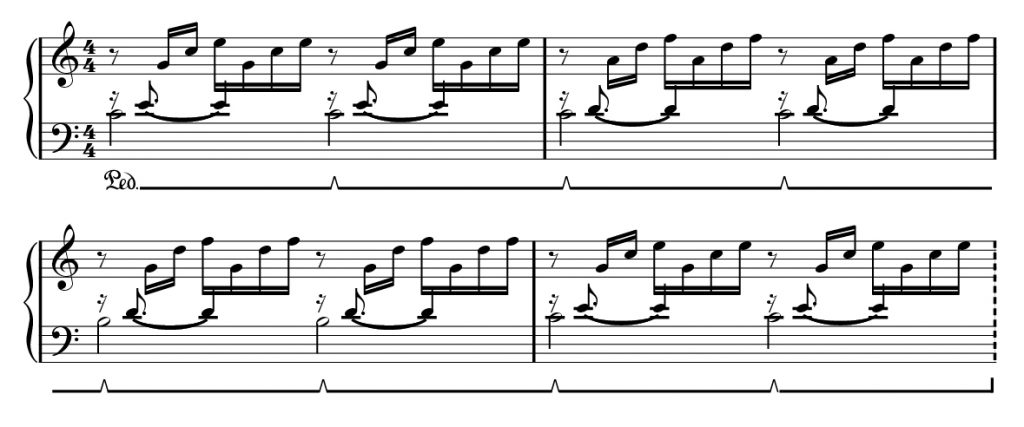
Here’s the same piece of music played at a slightly faster tempo, with the first run-through using pedaling and the second run-through with no pedaling.
All the notes in this piece fit easily under your hands, so you don’t need to use the pedal. But after listening to how rich and sonorous everything becomes when the notes ring together sympathetically, playing with no pedaling sounds so much drier, and, well … ordinary.
The Left Pedal
If you have an acoustic piano, or a digital piano with a full complement of three pedals (either built-in or available as an optional accessory), you can explore the left-most one, traditionally called the Una Corda pedal, or the Soft pedal. Both names are a bit confusing, for reasons that we’ll explain shortly.
When you depress this pedal on an acoustic grand piano, the entire keyboard mechanism is shifted slightly to the right, causing the hammer to only strike two of the strings, rather than all three, as shown in this video. This will produce a slightly thinner sound, though it’s a very subtle change. It does produce a markedly different tone, however, due to the fact that fewer strings are being struck, and also because the area of the hammer closer to the edge is employed, which is likely to be less compressed and worn from general playing. So why call this pedal Una Corda (“one string” in Italian)? It’s because, when the piano was invented in the early 1700s, the majority of the note range used groups of two strings, not the three that became common design around the middle of the nineteenth century. Using this pedal thus reduced the struck area to one string.
In an upright piano, the mechanism is different. Here, depressing the Soft pedal moves the hammer action closer to the strings, so it has less distance to travel, as shown in this video. This results in less momentum during the hammer motion and a truly softer sound, but with no tonal difference. Obviously digital pianos cannot physically achieve either of these mechanical effects, so they just reproduce the aural effects, making the sound both quieter and tonally gentler. You can hear this in the audio clip below, where the second run-through is played with the Soft pedal engaged.
In general, if you want to simply play softer you should achieve that effect with touch alone. The Una Corda/Soft pedal should be used only when you want a more delicate, or more muted sound as a tonal variation. This pedal is also commonly engaged when accompanying a vocalist or other instrument soloist so you don’t overpower them with your playing.
The Middle Pedal
On acoustic grand pianos and most digital pianos, the function of the middle pedal (called the Sostenuto pedal) is to selectively sustain only those notes whose keys are currently depressed; you can then play freely around those notes with a short articulation and/or apply the damper pedal as needed, as this video demonstrates. However, on some pianos, depressing the Sustenuto pedal will only sustain notes in the lower range of the instrument (a function called Bass Sustain), since you’ll often want to sustain one or more bass notes while being able to play higher notes more freely.
On most upright pianos, the middle pedal serves a different function, instead moving a long piece of felt between the hammers and the strings, as shown below. This serves to mute the sound, thus allowing players to practice quietly, as demonstrated in this video.
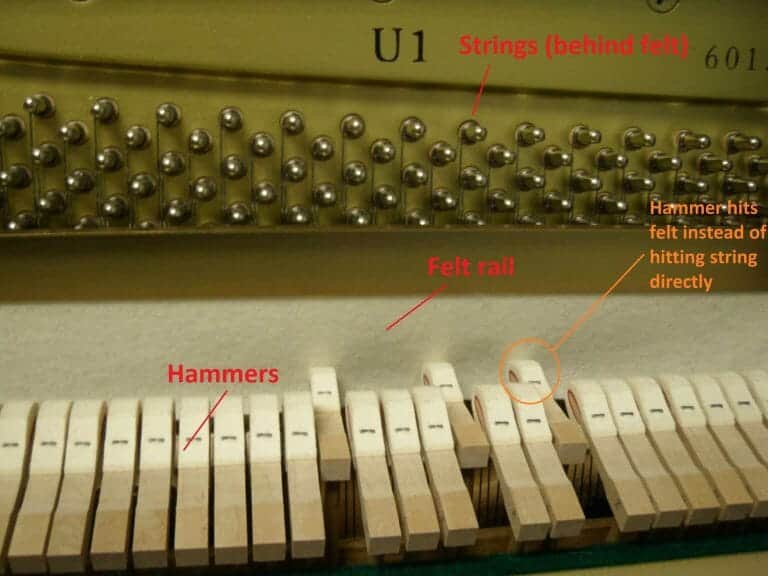
In those pianos, the middle pedal may be called a Practice pedal, or a Mute pedal. However, there are a few upright piano models, such as the Yamaha YUS5, where the middle pedal provides a true Sostenuto function.
All audio played on a Yamaha P-515
Check out our other Well-Rounded Keyboardist postings.
Click here for more information about Yamaha keyboard instruments.











